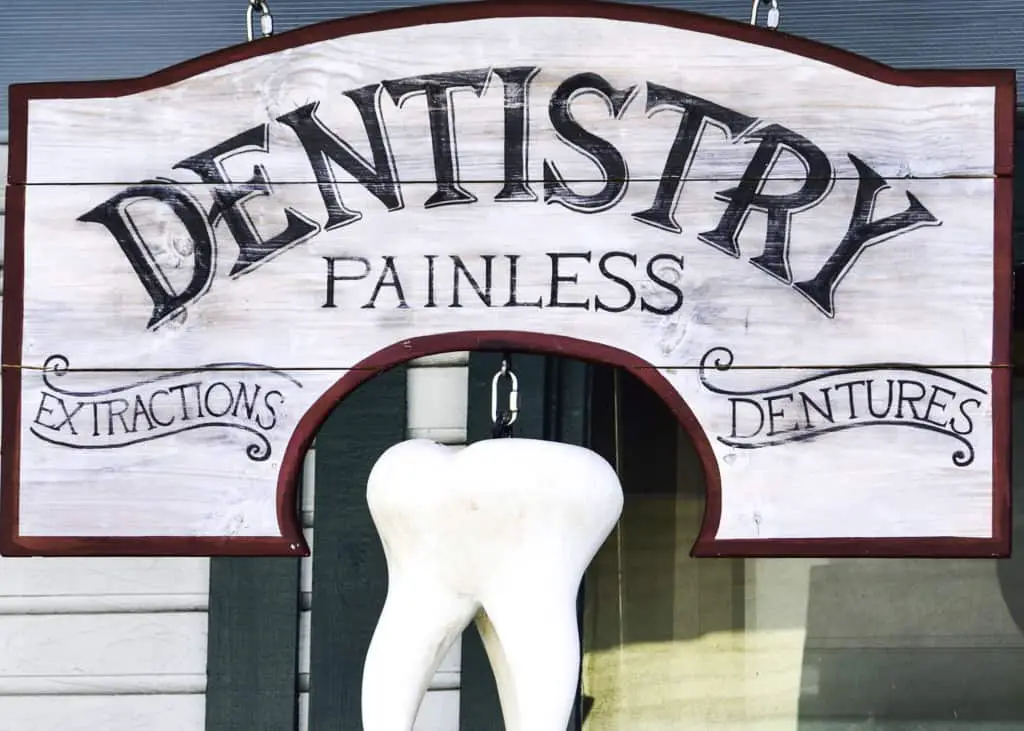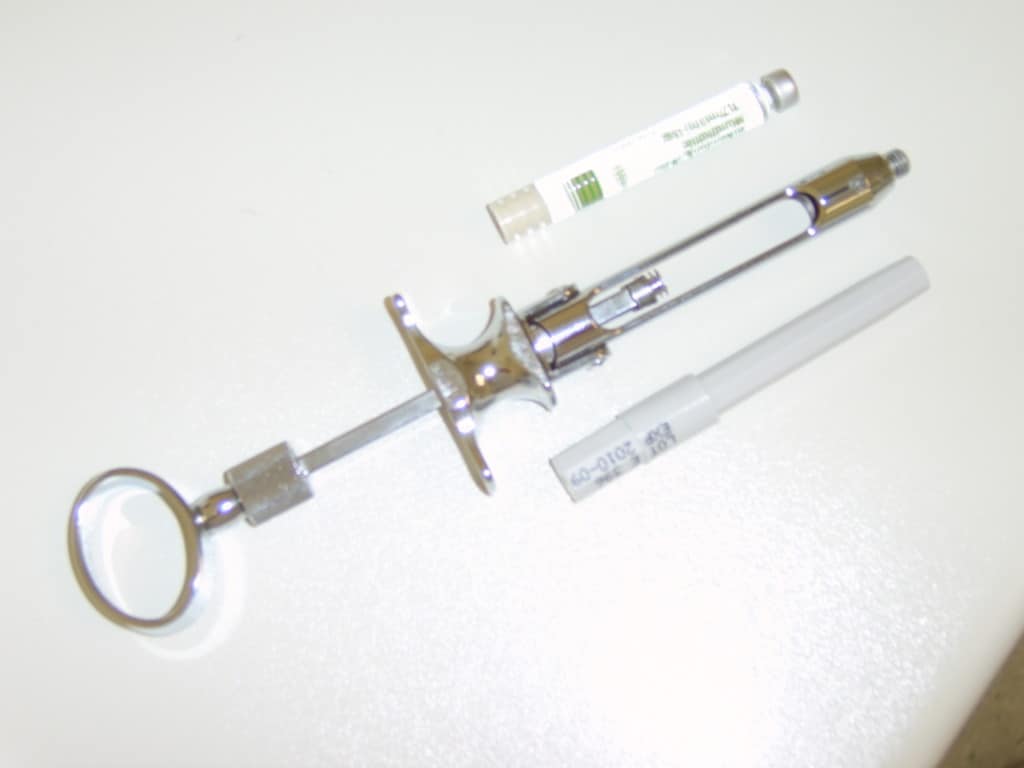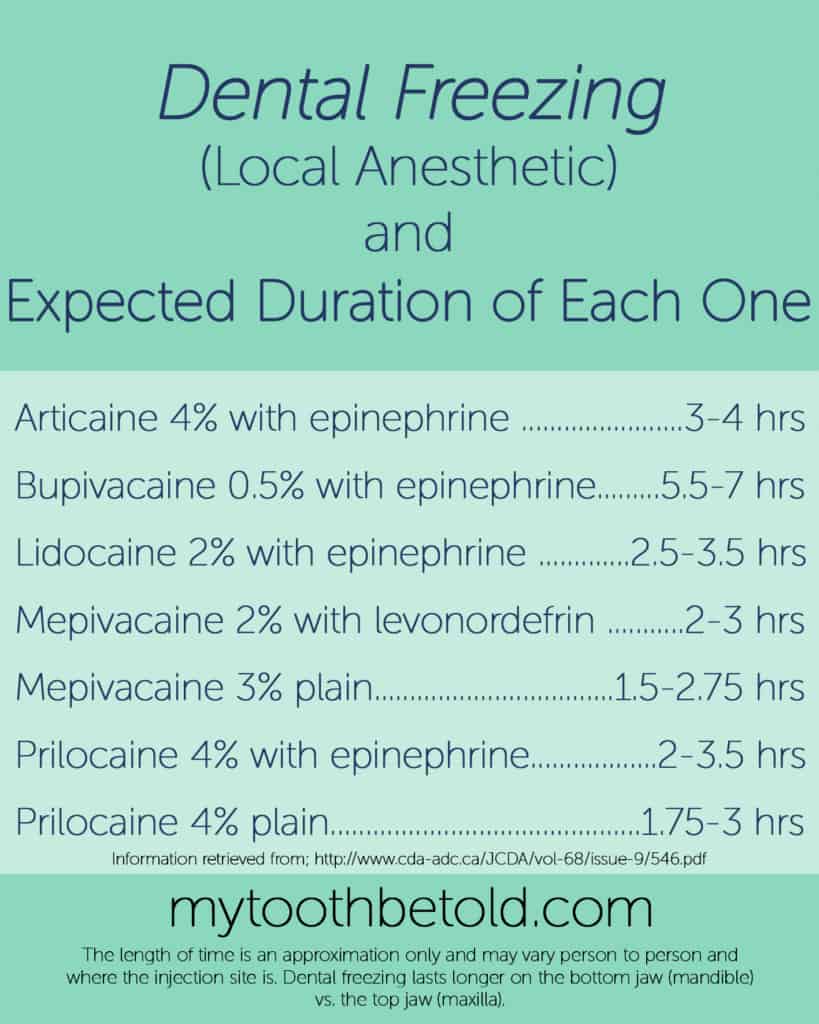
Receiving local anesthetic for dental treatment is a necessary evil, with many people dreading the needle at the beginning of the appointment. But imagine dental treatment without it? OUCH! Dentistry has come so far in the last 100 years, it’s incredible.
Dental freezing can leave us feeling like we have a fat lip, tongue, or unable to properly move our face. This can affect our speech, and limit our smiling making us want to hide until the numbness goes away.
Maybe you have a meeting, or something else going on that you need the dental freezing to go away more quickly or you just hate how it feels.
Here are 11 ways of making dental freezing go away faster;
- Gentle exercise
- Hot shower
- Hot bath
- Hot/warm compress
- Gentle massage
- Drink lots of water
- Sleep
- Reversal needle injection (OraVerse)
- Don’t smoke
- Eat foods that increase blood flow and circulation
- Be patient, do something you enjoy!
Farther down in this post you can find each way explained in more detail.
There are 2 forms of local anesthetic used in dentistry;
- Topical and
- Injectable
Topical is used at the site of injection to help numb the soft tissue prior to needle insertion. However, most of the pain felt by the needle is the solution being injected, not the needle going through the tissue.
Types of injectable dental freezing
Lidocaine is the more modern version of novocaine, the dental freezing most mentioned in music (cue Novacaine by Fall Out Boy ).
).
Novacaine isn’t used anymore in dental injections as it was known for causing some allergic reactions, but this isn’t new. Dentists haven’t used Novacaine in about 30 years or more with Lidocaine being invented in the 1980s.

Lidocaine is the most popular dental freezing used, but there are others including; Articaine, Bupivacaine, Mepivacaine, and Prilocaine.
When the dentist chooses an anesthetic, they consider the length of the treatment planned, your medications, and your current health conditions.
How does the dentist freeze you and how does it work?
The dentist will probably apply some topical anesthetic for at least 2 minutes to minimize the feeling of the needle insertion and solution administration.
to minimize the feeling of the needle insertion and solution administration.
The dentist may shake your cheek to distract you and to actually block/minimize the pain of the needle insertion and the administration of the local anesthetic (LA) into the tissue.
Shaking your cheek can cause other nerve endings to fire to your brain, overloading the brain with multiple things happening at once so your brain can “leave out” the pain from the actual needle being given.
How long does dental freezing last?
Dental freezing lasts for 1-7 hours. The amount of time is reliant on the type and amount of local anesthetic used, the location it was injected, if it contains epinephrine, and the patient’s metabolism and health. Freezing lasts longer on the bottom (mandible) jaw than on the top (maxilla) jaw.
Different local anesthetic solutions last for differing amounts of time. Refer to the table below for the average number of hours you will feel numb for the different types of injectable local anesthetic (LA).
| Types of injectable LA | Average # of hours |
| Articaine 4% with epinephrine | 3-4 hours |
| Bupivacaine 0.5% with epinephrine | 5.5-7 hours |
| Lidocaine 2% with epinephrine | 2.5-3.5 hours |
| Mepivacaine 2% with levonordefrin | 2-3 hours |
| Mepivacaine 3% plain | 1.5-2.75 hours |
| Prilocaine 4% with epinephrine | 2-3.5 hours |
| Prilocaine 4% plain | 1.75-3 hours |
The information in the table above was retrieved from this journal by the Canadian Dental Association.
It’s important to note that these numbers can be different from person to person and dental freezing will usually fade more quickly from the maxilla (top jaw) vs the mandible (lower jaw).
As well, the pulp of the tooth loses the dental freezing much faster than the surrounding soft tissues such as the lips, cheeks and gums.

If the local anesthetic contains epinephrine (adrenaline), the dental freezing will last longer. This is because it causes the blood vessels to shrink/constrict, limiting blood flow.
The more blood flow there is, the faster the numbness will come out because your blood will take away the freezing and metabolize it.
A local anesthetic with epinephrine is most often used in longer procedures or if there is an infection present. Sometimes if an infection is too large or serious, dental freezing will not work because there will be too much blood in that area.
At this point, if the infection is more severe and unable to be frozen, your dentist will probably put you on antibiotics to reduce the inflammation around where they need to freeze.
You will have to take the full course of the antibiotics (always finish the entire prescription! If you don’t, it could create antibiotic-resistant bacteria). You will be rebooked to complete the treatment.
11 Ways to Wear off Dental Freezing Faster; Hygienist Explains
It’s pretty simple, more blood flow=faster the freezing comes out.
- Gentle exercise
- Don’t do anything crazy because your body does need to heal. Walking or even just getting up and walking around your house and doing household chores can be enough to make the freezing wear off faster.
- Hot shower
- A hot shower will definitely get the blood flowing.
- Hot bath
- Taking a hot bath can be calming and relaxing. Not only will it increase your blood flow to get the freezing to go away faster, but it can ease your mind and you can destress.
- Hot/warm compress
- Again, the warmth will dilate the blood vessels so the anesthetic will be metabolized faster. This hot compress
 got me laughing out loud from the concept but it’s actually amazing! It leaves you to be hands-free… which is great with our busy lives.
got me laughing out loud from the concept but it’s actually amazing! It leaves you to be hands-free… which is great with our busy lives.
- Again, the warmth will dilate the blood vessels so the anesthetic will be metabolized faster. This hot compress
- Gentle massage
- Avoid the site worked on to avoid injuring it. Massage your lips, cheeks and jaw gently. You can use circular and up and down motions.
- Drink lots of water
- Your blood has a very high water content, so the more H2O that you drink, the more hydrated you are and the more your blood will flow, metabolizing the anesthetic.
- Sleep (take a nap)
- Time goes a little faster when you are out for the count. Napping also allows your body to relax and enter recovery mode.
- Reversal needle injection (OraVerse)
- OraVerse
 (phentolamine mesylate) can make dental freezing wear off twice as fast. It is not a common procedure (yet) as the freezing will come out on its own. This is usually expensed to the patient as insurance does not usually cover it. Some dentists won’t even have it due to it not being used often.
(phentolamine mesylate) can make dental freezing wear off twice as fast. It is not a common procedure (yet) as the freezing will come out on its own. This is usually expensed to the patient as insurance does not usually cover it. Some dentists won’t even have it due to it not being used often. - It is indicated for use when a patient is more prone to injuring themselves after freezing. This could be due to development, or physical disabilities. However, some people do want it because it can help reduce drooling and allow you to smile, drink and speak normally quite quickly.
- OraVerse
- Don’t smoke
- Smoking constricts blood vessels (the nicotine within cigarettes does this), prolonging the dental freezing effects.
- Eat foods that increase blood flow and circulation
- Foods that can increase blood flow such as garlic will thin your blood, making it flow more and getting that numbness to go away! But don’t eat too much especially if you had a tooth extracted. If your blood is too thin, it can be a risk factor in losing the blood clot.
- Read Now: 21 Best Vegan Foods to Eat After Having a Tooth Extracted

- Be patient, do something you enjoy!
- Ever hear about the “stopped-clock illusion”? Well even if you’ve never heard it you have most likely experienced it yourself. It’s the perception of time – when we stare at the clock or want something to come more quickly it will seem like it is taking forever, but if we are not paying attention and having fun, time seems to go by more quickly.
- This example is not fair because it won’t actually make your dental freezing come out faster, but if you distract yourself with something you enjoy time will seem to move more quickly.
What not to do when you have a frozen mouth
Before participating in any physical activity ask your dentist for their advice. Depending on what procedure you had, there could be differing post-operative instructions that you need to follow.
Take it easy and just stick with the gentle exercise… don’t go and run a marathon!

You can probably eat and drink right after having dental freezing however, some dental work requires you not to eat anything because the glue/cement is still setting.
If your dentist gives you the all-clear to eating /drinking, avoid hot and hard foods until the freezing wears off. This is so you don’t bite your tongue, cheek or lip, or burn yourself. Be aware of the different areas that are frozen to avoid injury.
Be sure to ask your dentist about all your concerns, or ask them any questions you may have. Knowing beforehand how long the procedure is and how long the freezing will last can reduce stress and help you plan your recovery afterwards.
These are things I feel are extremely useful when recovering after dental freezing
- Lumineux Oral Essentials Mouthwash
 : This stuff is an amazing homeopathic solution for relieving symptoms of oral procedures including; tooth extractions, oral surgery, implants, orthodontics, sore gums, dry sockets, canker sores, denture sores, aphthous ulcers and mucositis.
: This stuff is an amazing homeopathic solution for relieving symptoms of oral procedures including; tooth extractions, oral surgery, implants, orthodontics, sore gums, dry sockets, canker sores, denture sores, aphthous ulcers and mucositis. - Face Ice Pack
 : I love this thing with all my heart. It is just SO functional. The best thing; it allows you to go hands-free so you can do other things around the house while wearing it. It’s not just a cold pack, but a hot pack too – perfect for helping that dental freezing wear off! And it’s not just for recovering from dental procedures, but if you suffer from TMJ disorder or pain, this thing is PERFECT (even though we can look silly wearing it)!
: I love this thing with all my heart. It is just SO functional. The best thing; it allows you to go hands-free so you can do other things around the house while wearing it. It’s not just a cold pack, but a hot pack too – perfect for helping that dental freezing wear off! And it’s not just for recovering from dental procedures, but if you suffer from TMJ disorder or pain, this thing is PERFECT (even though we can look silly wearing it)!
Read now: 12 Benefits of Using an Electric Toothbrush
Happy Smiling!
Holly 🙂

